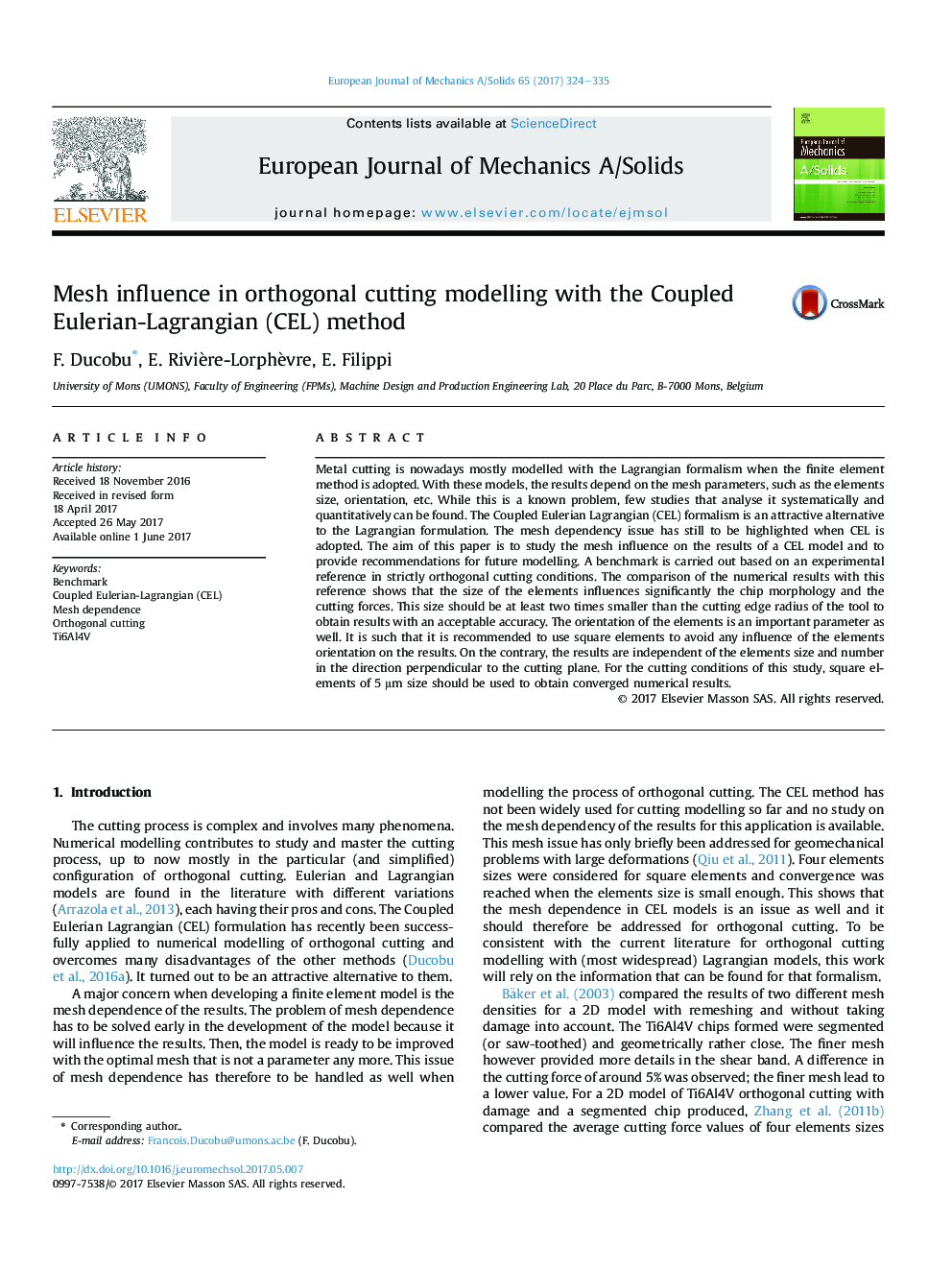| Article ID | Journal | Published Year | Pages | File Type |
|---|---|---|---|---|
| 5014287 | European Journal of Mechanics - A/Solids | 2017 | 12 Pages |
Abstract
Metal cutting is nowadays mostly modelled with the Lagrangian formalism when the finite element method is adopted. With these models, the results depend on the mesh parameters, such as the elements size, orientation, etc. While this is a known problem, few studies that analyse it systematically and quantitatively can be found. The Coupled Eulerian Lagrangian (CEL) formalism is an attractive alternative to the Lagrangian formulation. The mesh dependency issue has still to be highlighted when CEL is adopted. The aim of this paper is to study the mesh influence on the results of a CEL model and to provide recommendations for future modelling. A benchmark is carried out based on an experimental reference in strictly orthogonal cutting conditions. The comparison of the numerical results with this reference shows that the size of the elements influences significantly the chip morphology and the cutting forces. This size should be at least two times smaller than the cutting edge radius of the tool to obtain results with an acceptable accuracy. The orientation of the elements is an important parameter as well. It is such that it is recommended to use square elements to avoid any influence of the elements orientation on the results. On the contrary, the results are independent of the elements size and number in the direction perpendicular to the cutting plane. For the cutting conditions of this study, square elements of 5 μm size should be used to obtain converged numerical results.
Related Topics
Physical Sciences and Engineering
Engineering
Mechanical Engineering
Authors
F. Ducobu, E. Rivière-Lorphèvre, E. Filippi,
